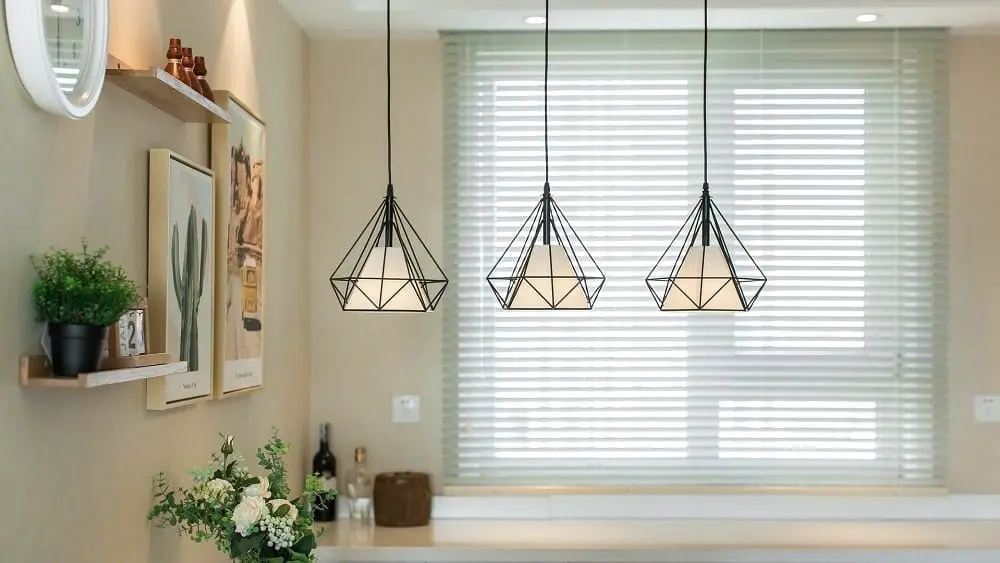
Whether you are in the thick of choosing options for your to-be-built home or have recently moved into a newly built home, your attention may be focused on finishes and furnishings more than a creating a lighting plan.
For many homebuyers, lighting is an afterthought, something they think about only once they start to live in their home.
But for older homeowners in particular, lighting is an essential element to preserve safety and security, as well as for enjoying more comfortable vision for daily tasks and hobbies.
“According to the American Lighting Association, after age 60, eye and visual system changes accelerate so that less light reaches the eye and people need more light to see details,” says Todd Roy, national sales director for Progress Lighting. “It’s important to have ambient light for general illumination, task lighting and accent illumination for visual appeal and also to have lights that you can direct.”
Older people have more trouble with glare from lighting, such as uncovered chandelier bulbs and recessed lighting, as well as shiny surfaces, says Lisa Reed, principal of Envision Lighting Design.
“While more light is needed when you’re older, it’s not always comfortable to have more light,” says Reed. “Adjustable lights that can be moved or turned off can be helpful and dimmers give you more flexibility.”
For safety reasons, it’s important to recognize that aging eyes adapt more slowly to changes in brightness levels, says Eunice Noell-Wagoner, president of the Center of Design for an Aging Society. That’s why it’s important to have your lighting as consistent as possible.
Outdoor Lighting
Progress Lighting recommends a mix of lights outside to improve safety and security, such as lights along a pathway and landscape lighting that can provide balanced lighting and illuminate areas that could be shadowed.
“Lighting along steps indoors and outdoors is helpful, but it has to be regular and consistent,” says Noell-Wagoner. “It can add confusion unless you have lighting on every step.”
LED lighting in a long continuous strip can be helpful, she adds. She says she used to use the “poor man’s solution” before LED lighting became more available: rope lights along a railing. Now LED lights can be installed underneath the railing for inconspicuous, but useful, lighting.
While a bright light by your door can help you unlock it at night, it’s important to avoid glare from outdoor lights that shine into your face and actually make it harder for you to see, says Reed.
Noell-Wagoner recommends a frosted lens to reduce glare.
Direct and Indirect Lighting
Indirect ambient lighting is essential for older people, says Noell-Wagoner.
“Ideally you have cove lighting or some concealed light source where the light is directed toward a ceiling or wall,” she says. “Recessed lighting can be mounted in the ceiling or by the floor as long as it is directed down the sides of the room and up toward the ceiling to avoid glare.”
Task lighting, such as under-cabinet lights, are helpful in the kitchen for reading recipes and cooking, says Noell-Wagoner.
Pendant lighting can also work to provide task lighting. Progress Lighting recommends choosing pendants with a wide beam spread and with a covered light source to avoid glare.
“In the bathroom, you should install vertical lighting on each side of the mirror so you can see when shaving and putting on makeup,” says Noell-Wagoner. “A single fixture above the mirror can cause shadows.”
Direct lighting is particularly important in closets, laundry rooms, pantries and kitchens to be able to read labels on clothing, food and medications.
Safety and Lighting
Anytime you change the level, such as at the stairs or even a shower curb, you need good lighting to aid in the transition, says Noell-Wagoner.
“You can order an LED light strip that runs underneath a bed and has a motion sensor that turns on amber night lights when you get up in the night,” she says.
Reed recommends adding lighting near the ground such as toe-kick lighting in the bathroom and low lights along stairs to illuminate them.
“It’s especially important to have lighting where flooring changes, such as switching from hardwood to carpet, to avoid trip hazards,” says Reed. “You should also make sure the top and bottom of the stairs are illuminated.”
LED Lights and Colors
LED lights are a great innovation, says Noell-Wagoner, because they can hide behind wood mouldings above windows and in other areas where you want light but less visible fixtures, as well as in a shower or along railings.
“LED light sources are a great solution for aging residents for several reasons,” says Roy. “LED lamps produce almost no heat, which eliminates the risk of burns. They last for decades, which means homeowners can say goodbye to climbing a ladder every year or so to change burnt-out lamps.
LED lights may be initially costlier than a standard incandescent light, but they pay for themselves in energy savings, says Roy.
“Increases in efficacy (lumens per watt) and warm white color consistency make LED options gentle on aging eyes,” he says. “The key to selecting the right LED fixtures for aging individuals is to have a warm color temperature (2700 to 3000k) and a high color-rendering index (90 CRI or above).”
Reed says that while everyone wants warmer colors in their home for lighting, it’s best to purchase lights that have more blue in in them for visual acuity when you’re older.
Quick Tips to Update Your Lighting
If a lighting overhaul isn’t in your budget, Roy suggests installing dimmers on every light in the house, a simple fix that gives you more control. You can also replace your traditional light switches with ones that glow-in-the-dark so they’re easier to find.
As you age, layering light sources can ease the strain on your eyes and reduce the chances of stumbling in the dark.

Michele Lerner is an award-winning freelance writer, editor and author who has been writing about real estate, personal finance and business topics for more than two decades.
 Luxury Alfresco: Designer Richard Frinier Talks Trends in Outdoor Luxury Market
Luxury Alfresco: Designer Richard Frinier Talks Trends in Outdoor Luxury Market